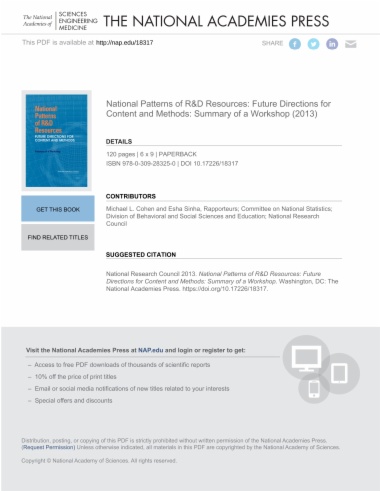

National Patterns of R&D Resources is an annual report issued by the National Center for Science and Engineering Statistics (NCSES) of the National Science Foundation, which provides a national view of current 'patterns' in funding of R&D activities in government, industry, academia, federally funded research and development centers, and non-profits. Total R&D funds are broken out at the national level by type of provider, type of recipient, and whether the R&D is basic, applied, or developmental. These patterns are compared both longitudinally versus historical R&D amounts, and internationally.
This report series, which is based on input from several censuses and surveys, is used to formulate policies that, e.g., might increase incentives to support different types, sources, or recipients of R&D than is currently the case. To communicate these R&D patterns, each report is composed of a set of tabulations of national R&D disaggregated by type of donor, type of recipient, and type of R&D. While this satisfies many key user groups, the question was whether some modifications of the report could attract a wider user community and at the same time provide more useful information for current users.
National Patterns of R&D Resources: Future Directions for Content and Methods addresses the following questions: (1) what additional topics and tabulations could be presented without modifying the current portfolio of R&D censuses and surveys, (2) what additional topics and tabulations might be presented by expanding these current data collections, (3) what could be done to enhance international comparability of the tabulations, (4) since much of the information on non-profit R&D providers and recipients is estimated from 15 year-old data, what impact might this be having on the quality of the associated National Patterns tabulations, (5) what statistical models could be used to support the issuance R&D estimates at state-level and geographic regions below the national level, (6) what use could be made from the recent development of administrative sources of R&D information, and finally, (7) what graphical tools could be added to the current tabulations to enhance the communication of R&D patterns to the users of this series of publications.